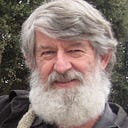I was raised deeply embedded in a quasi-fundamentalist denomination. I saw this understanding of flat earth Hebrew cosmology back in the 1960's when I took my first OT course at Pomona College. It, along with the rest of the course, was transformational in that it allowed me to read the Old Testament for the first time with comprehension rather that tying myself in knots. The actual effect of denial of the OT's true nature is Christians simply don't read it, or they allow selective passages to be read to them in church. Seeing the Bible for what it is can be liberating for someone raised with fundamentalist beliefs.
BTW, when I teach astronomy (to adults in a Jr. college night school setting) one of the early points I make, to address the misconceptions of the majority of my students, is to point out that "there is no sky!" The sky (in the sense of some kind of surface dividing the atmosphere from space) is an illusion created by our limited depth perception. We can directly perceive depth across the room due to our binocular vision. Our eyes triangulate to judge distances. But in the distance the foothills and distant mountains, which may be at very different distances, are flattened together because depth perception fails at great distances. The lines of sight from our two eyes are essentially parallel, so triangulation doesn’t work. I remember as a child being concerned while flying a kite on a windy day that it might get caught on the moon. When everything appears the same distance away our brain interprets the situation as our being at the center of a sphere, which has that geometric property. This is not a matter of theological training. It is maturational. All children have flat earth cosmologies, and unless educated as they grow ups, they retain remnants of those cosmological understandings into adulthood, as pretests in my astronomy classes abundantly show.
